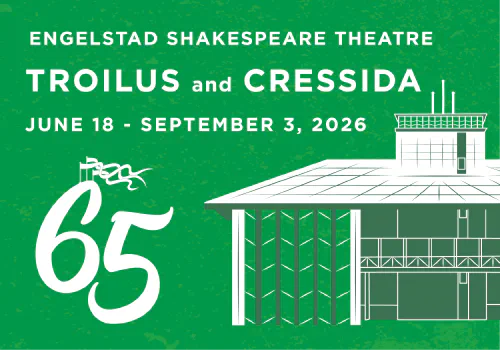By Derek Charles Livingston
The British royals have always been messy, long before Harry and Meghan, before Charles and Diana, before Wallace Simpson and Edward VIII, even before Henry VIII.
That monarch’s reign, along with its personal and political fluctuations and intrigue, particularly has been the inspiration for a disproportionate number of plays, books, movies, novels, and television series. Arguably, many know about Henry VIII, not because of the policies put in place during his reign, but because of his personal life, those six wives, and, well, the messiness associated with six marriages so oft depicted in those dramatic narratives. Even the most passive follower can name the fate of one or two of Henry’s wives, with fans of the current Broadway hit musical Six reminding us of their fates as quoted in the show’s opening words: “Divorced. Beheaded. Died. / Divorced. Beheaded. Survived.” Nearly 400 years after his death, given the ignobility of simply being a monarch who, not only had six wives, but could dispatch them so dramatically means that present-day individuals are able to capriciously dismiss Henry as the man with “the wives problem” and snicker at his spouses’ disposability, often forgetting that these were real people who were egregiously wronged by the monarch. This reductive view of Henry––tyrant though he was, and not just in his marital life––fails to consider very real dynamics underlying the inciting incident earning Henry’s disrepute: the pursuit of an annulment of his two decades long marriage to Catherine of Aragon in order to wed one of her ladies-in-waiting, Anne Boleyn.
At the time, circa 1525, England, like many European countries, was a very Catholic country, and dissolutions of marriages were challenging and divorce practically unheard of. Henry sought an annulment of his and Catherine’s marriage on the pretext that it should not have been allowed in the first place as Catherine was his older brother Arthur’s widow. Arthur, who was in line to succeed his and Henry’s father, Henry VII, to the throne, had died as a teen husband to Catherine, herself the daughter of Spain’s king. That marriage was very much a political and financial arrangement to strengthen alliances between the two countries. Following Arthur’s early death, all involved maintained that the marriage was never consummated, and Pope Leo allowed the annulment post Arthur’s demise. Wishing to maintain the alliance, Henry VII promoted wedlock between Catherine and the English throne’s new heir, Henry (later Henry VIII). He initially rejected the union, but later relented and at 17 years old, married the 23-year-old Catherine of Aragon, who had remained in England as her native country’s ambassador there (and Europe’s first recorded female ambassador). Nearly twenty years into their marriage, after four still-births (two male, two female), the death of a son who only lived seven weeks, and a daughter, Mary (who would later sit on the throne for almost five years), the Henry and Catherine union had failed to produce a male heir. The want of one, combined with the King’s falling in love with Anne, who at twenty-five, was still in traditional childbearing age, began a seven-year journey to end the Henry-Catherine union and forge the Henry-Anne marriage.
When the Pope refused to annul the Henry VIII-Catherine marriage, a constitutional and religious crises arose with diplomats shuttling between England, Rome, France (where Henry sought support from the French king), and the Holy Roman Empire to resolve the issue. The years-long machinations resulted in England’s separation from the Catholic religion. And The Church of England––with the king as head of the realm and the church––replaced Catholicism. The country’s new religious leaders then granted the annulment and later recognized Henry and Anne’s union. The situation was as likely clichéd then as it is now: a middle-aged man tosses off his similarly-aged wife in deference for a younger woman. In this instance, the decision and the resulting pursuit of an annulment, dubbed “The King’s Great Matter,” had national and international implications. An overly telescoped interpretation of “The Matter” belies the very real dynamics contributing to decisions made by that king. He had a very legitimate concern: he needed a male heir.
To contemporaries, after the long reigns of Elizabeth I (Henry’s daughter), Queen Victoria, and the recent record-setting throne occupation of Elizabeth II, the pressing need for a male heir during Henry VIII’s time can be easily lost. However, it was a very real worry. Henry succeeded his father, Henry VII, to the throne, after the fall of Richard III, thereby establishing a new royal line, the Tudors. Much of the strife that preceded Henry VII’s ascension was the deadly, long-fought War of the Roses. The War of the Roses––or the Civil War as it was known in that time––rose from a question of who had the right to ascend the throne: a descendant from a female line, who was actually closer in degree to the previous monarch, or a degree-more-removed descendant from a male line whose enthronement would maintain the male progenitor tradition that had long governed England. These two issues had to be of great tribulation for Henry VIII, and having a male heir would both legitimize the nascent Tudor line and forestall the jockeying for the crown that had rent the country for decades. When his marriage to Catherine failed to produce a male who lived beyond infancy, the prospect of chaos was very real.
What could another battle royale mean for England? The very possibility of the end of the realm itself. At the time the Holy Roman Empire, under Charles V––Catherine of Aragon’s nephew––headed a formidable European power that had sacked Rome and even held the pope captive. Peace with France was an ever-changing condition with treaties and alliances made and broken between the two historic enemies with destabilizing regularity. The marriage of Henry VIII’s sister Mary, to the French king, which had been instrumental in the recent peace between the two nations, had ended with her becoming widowed and returning to England. So there were any number of forces ready to pounce or at least take advantage of any potential disruption or question to England’s throne.
Perhaps there’s another factor impacting Henry’s world and his decision to end his marriage: maybe he really believed he was facing God’s punishment. For reasons already articulated, having a legitimate male heir was of paramount importance, yet this had been denied him. After all, his marrying Catherine, reportedly, was his father’s dying wish. With the nuptials, he kept his father’s hope and the alliance was maintained. Henry, therefore, acting as a good son and a prudent leader, had adhered to the biblical dictate of honoring his father. But in doing so had he offended his heavenly Father? Much can be made of Henry ransacking the coffers and institutions belonging to the church upon his country’s separation from the Vatican. However, previously, Henry was mostly a faithful adherent, even in his role as king. Certainly, one can question whether his actions always measured up to being a good Catholic, but humans are complex as is their adherence to their faiths’ doctrines. Henry would be no different from many in handpicking which parts of his religion’s teaching to which he would abide and which of those teachings might have seeped into his consciousness. Catholic guilt combined with the search for reasons for not being blessed with a son may have caused Henry to ponder divine intervention. Perhaps, despite papal intercession, God actually was punishing him for marrying his brother’s widow, which as Henry himself was want to cite, violated God’s law as written in Leviticus. Ending the marriage to Catherine might have put him back in favor with his god.
Also, it’s possible, again, being a human, the many miscarriages and stillbirths of children fathered with Catherine created a grief that led Henry to conclude that God must be punishing him. History tells us that Henry doted on Mary, the one surviving child shared with Catherine. Further, he was the proud parent of a son fathered with an extra-marital relationship. Although Henry Fitzroy, the product of that relationship, could not inherit the throne, Henry VIII nonetheless acknowledged the offspring and showered him with access to learning and property to the degree that Fitzroy was jokingly referred to as a prince, although, de jure, he was not. If Henry was indeed a man given to parental pride and affection, then multiple losses of other children could also have created a grief in him manifesting itself in a guilt. Why should the fear of God’s retribution weigh any less on the human Henry than the fear of powerful neighbors or an endangered lineage weigh on the sovereign Henry?
Today we look back on Henry VIII and think of scandal plagued reign and a mercurial personality. But clearly, there were serious fears surrounding the second Tudor king. The very stability of the Tudor line itself, the possibility of opposing forces rising to demolish the realm, and the influence of Catholicism on the kingdom and its king cannot be discounted in the decisions that drove Henry’s actions, actions that render his reign so infamous. “Divorced, Beheaded, Died. / Divorced. Beheaded. Survived.” may be cute and nods toward the messiness of Henry VIII’s time on England’s throne. But the rhyme is far too reductive to encapsulate the complex thinking and resulting actions of England’s second Tudor king.










